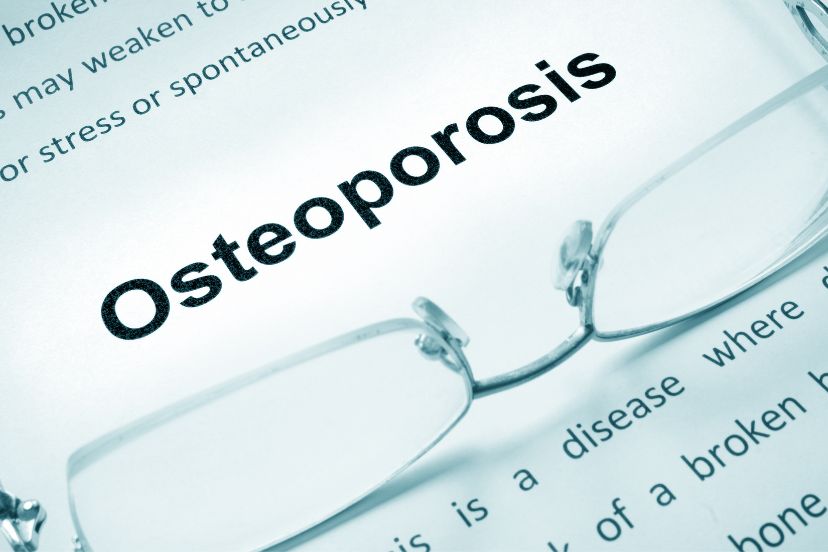Osteoporosis Risk Factors: Prevention and Management Strategies
Introduction:
Hey there! Are you concerned about your bone health? Osteoporosis is a condition that affects millions of people worldwide, leading to weakened bones and an increased risk of fractures. In this article, I will guide you through the risk factors associated with osteoporosis, highlighting the factors that contribute to its development. By understanding these risk factors, you can take proactive steps to protect your bone health. So, let’s dive in!
What is Osteoporosis?
Osteoporosis is a chronic condition characterized by the gradual loss of bone mass and deterioration of bone tissue, leading to fragile and brittle bones. It often occurs silently, without any noticeable symptoms until a fracture occurs. As we age, our bones naturally become less dense, but osteoporosis accelerates this process, making bones more susceptible to fractures.
The Prevalence of Osteoporosis
Osteoporosis is a widespread condition that affects both men and women, but it is more common in women, especially after menopause. According to the International Osteoporosis Foundation, worldwide, one in three women over the age of 50 will experience osteoporotic fractures, along with one in five men over the age of 50. These statistics highlight the significance of understanding and addressing the risk factors associated with osteoporosis.
Risk Factors for Osteoporosis
Various factors contribute to the development of osteoporosis. Let’s explore the most common risk factors and their impact:
Age and Gender
Advancing age is a significant risk factor for osteoporosis. As we grow older, our body’s ability to build new bone tissue decreases, while the rate of bone loss increases. Women, especially those who have experienced menopause, are at higher risk due to the decline in estrogen levels, which plays a crucial role in maintaining bone density.
Hormonal Changes
Hormonal imbalances, such as low estrogen in women and low testosterone in men, can increase the risk of osteoporosis. Conditions like early menopause, primary ovarian insufficiency, and hormonal disorders should be closely monitored to minimize the impact on bone health.
Family History and Genetics
If you have a family history of osteoporosis or fractures, you may have a higher predisposition to developing the condition. Genetic factors influence bone density and the rate of bone loss, making some individuals more susceptible to osteoporosis than others.
Nutritional Deficiencies
A diet lacking in essential nutrients, especially calcium and vitamin D, can contribute to poor bone health. Calcium is a building block for bones, while vitamin D facilitates the absorption of calcium. Inadequate intake of these nutrients can weaken bones and increase the risk of osteoporosis.
Sedentary Lifestyle
Lack of physical activity and leading a sedentary lifestyle can negatively impact bone health. Regular weight-bearing exercises, such as walking, dancing, or weightlifting, stimulate bone formation and help maintain bone density. Conversely, a sedentary lifestyle can lead to bone loss and increase the risk of osteoporosis.
Smoking and Alcohol Consumption
Smoking and excessive alcohol consumption have detrimental effects on bone health. Smoking reduces estrogen levels in women, accelerates bone loss, and impairs the body’s ability to absorb calcium. Similarly, excessive alcohol intake interferes with the body’s calcium balance and affects bone formation.
Medical Conditions and Medications
Certain medical conditions, including rheumatoid arthritis, celiac disease, and gastrointestinal disorders, can impair the body’s ability to absorb nutrients essential for bone health. Additionally, long-term use of certain medications like corticosteroids can increase the risk of osteoporosis.
Minimizing the Risk of Osteoporosis
Now that we have explored the risk factors, let’s focus on practical strategies to reduce the likelihood of developing osteoporosis:
Adequate Calcium and Vitamin D Intake
Ensure a diet rich in calcium-containing foods like dairy products, leafy greens, and fortified foods. Additionally, getting enough sunlight or considering vitamin D supplements helps optimize calcium absorption and promote bone health.
Regular Exercise and Physical Activity
Engage in weight-bearing exercises and muscle-strengthening activities regularly. Aim for at least 30 minutes of exercise most days of the week to promote bone density and overall well-being.
Healthy Lifestyle Choices
Quit smoking and limit alcohol consumption to moderate levels. These lifestyle changes not only benefit your bone health but also have positive effects on your overall health.
Fall Prevention
Taking preventive measures to reduce the risk of falls is crucial for individuals with osteoporosis. Make your living environment safe by removing hazards, installing grab bars, and using proper lighting.
Regular Bone Density Testing
Consult your healthcare provider to determine the need for bone density testing. This helps identify early signs of bone loss and allows for timely intervention.
Conclusion:
Osteoporosis is a serious condition that affects bone health and increases the risk of fractures. By recognizing the risk factors associated with osteoporosis and taking proactive steps to address them, you can minimize the chances of developing this condition. Remember, it’s never too early or too late to start taking care of your bone health. Prioritize a balanced diet, exercise regularly, and maintain a healthy lifestyle to keep your bones strong and resilient.
FAQs:
Can osteoporosis be prevented?
Yes, osteoporosis can be prevented or its progression can be slowed down by adopting a healthy lifestyle, including a calcium-rich diet, regular exercise, and avoiding smoking and excessive alcohol consumption.
Does osteoporosis only affect women?
No, although osteoporosis is more common in women, men can also develop this condition. It is particularly prevalent in older adults of both genders.
Are there any early signs or symptoms of osteoporosis?
Osteoporosis is often referred to as the “silent disease” because it typically doesn’t cause symptoms until a fracture occurs. Therefore, early detection through bone density testing is crucial.
Are there any natural remedies or supplements that can prevent osteoporosis?
While a well-balanced diet and appropriate exercise are crucial for bone health, it’s important to consult with healthcare professionals before considering any specific supplements or alternative remedies.
Can osteoporosis be reversed?
While osteoporosis cannot be completely reversed, with the right lifestyle modifications, medical interventions, and adherence to treatment plans, it is possible to slow down bone loss and reduce the risk of fractures.




